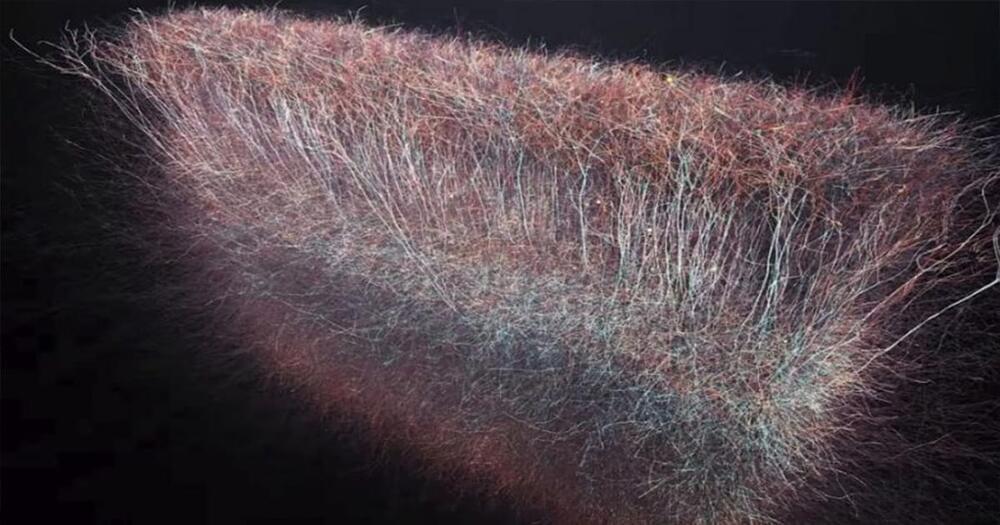Feb 27, 2023
What is the largest planet out of all the ones we know?
Posted by Dan Breeden in category: space
There’s a limit to how large planets can be, and it’s only about double the radius of Jupiter. At least, so far.
There’s a limit to how large planets can be, and it’s only about double the radius of Jupiter. At least, so far.
It’s not only body forms that evolve independently, but also organs and other structures. Humans have complex camera eyes with a lens, iris and retina. Squid, and octopuses, which are molluscs and more closely related to snails and clams, also evolved camera eyes with the same components.
Eyes more generally may have evolved independently up to 40 times in different groups of animals. Even box jellyfish, which don’t have a brain, have eyes with lenses at the bases of their four tentacles.
The more we look, the more we find. Structures such as jaws, teeth, ears, fins, legs and wings all keep evolving independently across the animal tree of life.
CRISPR-Cas systems have reshaped genome editing and nearly every biological field. See how Gibson Assembly is streamlining CRISPR workflows.
Scientists at Georgia Tech have discovered a new quantum state in a quirky material. In a phenomenon never before seen in anything else, the team found that applying a magnetic field increased the material’s electrical conductivity by a billion percent.
Some materials are known to change their conductivity in response to a changing magnetic field, a property called magnetoresistance. But in the new study, the material does so to an incredible degree, exhibiting colossal magnetoresistance.
The material is an alloy of manganese, silicon and tellurium, which takes the form of octagonal cells arranged in a honeycomb pattern, and stacked in sheets. Electrons move around the outside of those octagons, but when there’s no magnetic field applied they travel in random directions, causing a traffic jam. That effectively makes the material act like an insulator.

A shelved theory seems to have given new life to energy teleportation, a concept that pulls energy from one location to another. The notion might sound like science fiction, but some scientists demonstrated that it is possible to generate energy out of thin air.
According to The Space Academy, scientists were able to extract energy and filled a vacuum through two separate experiments. It has indeed opened a fresh world of quantum energy physics.

Experts have discovered that the human brain has structures and forms with up to 11 dimensions, which is a remarkable finding. “We discovered a realm that we had never envisaged,” neuroscientists said of the finding. Algebraic topology mathematical approaches have aided researchers in discovering structures and multidimensional geometric spaces in brain networks. A recent study, according to specialists, has demonstrated that the human brain has structures and forms with up to 11 dimensions. According to Science Alert, our brains have an estimated 86 billion neurons, with many connections from each cell stretching in every imaginable direction, making a super-vast cellular network that SOMEHOW allows us to think and be conscious.
Scientists Think They’ve Identified the Origin of a Mysterious Radio Signal from … Ready to be a little bit confused by complex science? Ok, here we go… Until now, time travel has only been possible in fiction (and on TikTok, according to some), but it might not be as far away as previously thought.
Quantum mechanics deals with the behavior of the Universe at the super-small scale: atoms and subatomic particles that operate in ways that classical physics can’t explain.
In order to explore this tension between the quantum and the classical, scientists are constantly attempting to get larger and larger objects to behave in a quantum-like way.
Back in 2021, a team succeeded with a tiny glass nanosphere that was 100 nanometers in diameter – about a thousand times smaller than the thickness of a human hair.
I guess humans aren’t the only ones getting the boot.🤣
Topics Google | Sundar Pichai.
According to a Wired report, Alphabet’s ‘Everyday Robots’ project — an unit under Google’s experimental X laboratories — has been shut down by Google CEO Sundar Pichai. It had trained 100 one-armed, wheeled robots to help clean the company’s cafeterias. Several of these robot prototypes were transported out of the lab and were doing useful duties throughout Google’s Bay Area facilities.
Continue reading “Google lays off 100 robot workers used to clean its cafeterias, says report” »
